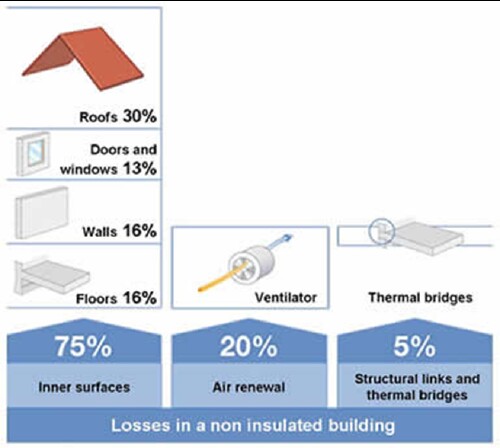
Radiant barriers are used to keep thermal (mid-infrared and long-infrared, 3-15 micrometers wave length) radiation from passing through the periphery of a house.
For roofs and walls the barrier is place to reflect thermal radiation on the outside. For windows the barrier is best reversed between summers and winters such that thermal radiation is reflect on the outside during summers and is reflected on the inside during winters.
The main ummer-time heat loss is through the roof:

Next is infiltration of air, followed by heat conduction through walls and floors. The roof and walls heat loss can be reduced by insulation and radiant-energy barriers. Some radiant-energy barriers are:
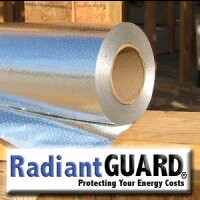 Available in both perforated (moisture passing) and solid (vapor barrier) versions.
Available in both perforated (moisture passing) and solid (vapor barrier) versions. Radiant heat is reflected on both sides for summer and winter heat barriers.
If a house has old windows it may be more cost effective and greener to install radiant window barriers than replace the windows.
In'Flector example of radiant-energy barrier:
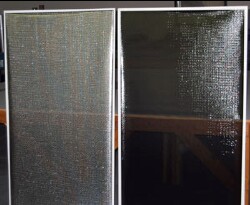
There are three layers:
The silver side is toward the side to reflect energy, outside during summer and inside during winter. So they must be installed such that it is easy to change their orientation twice a year.
Metal-framed screens are held in place by magnets. Aluminum-framed screens are held in place by springs. A handle is used to remove the screen; it can be reversed when the screen is reversed between summer and winter. For casement windows that need to be opened the screen can be two parts with the lower part fitted into a channel at the bottom of the upper part. A handle is on each part.
Improve energy performance of windows with In'Flector radiant-energy barrier :
Window Type |
Solar Heat Gain/Blocked |
With In'Flector |
Single Pane |
13% |
77% |
Double pane |
>28% |
80% |
38% |
83% |
|
In'Flector alone |
73% |
|
Window Type |
% UV Blocked |
With In'Flector |
Single Pane |
12% |
78% |
Double pane |
20% |
2% |
35% |
85% |
|
In'Flector alone |
74% |
|
In'Flector radiant-energy barrier thermal properties
Transmittance1 |
Reflectance1 |
Absorbtance1 |
Emittance |
|
Aluminized Surface |
0.28 |
0.65 |
0.07 |
0.69 |
Black Surface |
0.30 |
0.19 |
0.51 |
0.86 |
In'Flector also has vertical blinds that can be opened and closed either for summer or winter. There also is a roller shade. Pictures of installed screens, vertical blinds and roller shades.
In addition to being a radiant barrier, the screen also reduces air infiltration since it is tightly fitted to the window frame. Of course, this is not the case for vertical blinds or roller shades. And the extra air space between the window and the screen provide more conduction resistance.
I did temperature measurements in Blacksburg VA at noon on 28 Nov 2010 for two windows within ten feet of each other with full sunlight coming through both windows:
Time of day |
With Radiant Barrier |
Without Radiant Barrier |
noon |
90 F |
75 F |
1 PM |
105 F |
80 F |
2 PM |
108 F |
73 F |
3 PM |
85 F |
69 F |
12 Dec: 11:30 AM |
61 F |
51 F |
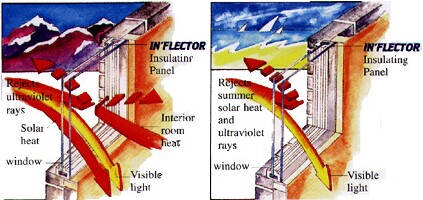
Left: winter time
| Right: summer time
The size of the conductive metal mesh determines the probability of electromagnetic radiation passing through the mesh, depending on the wave length of the mesh. The transmission probability is maximum when the mesh-opening size is equal to the radiation wavelength and declines for larger and smaller wavelengths, but declines faster as the wavelength gets larger.
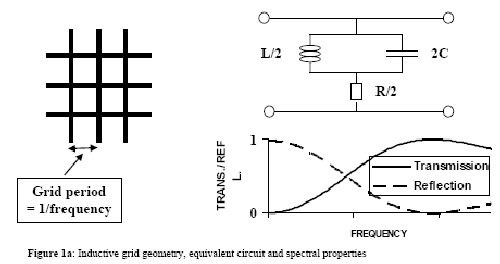
wavelength = 1/frequency
From the diagram above we see that a typical mesh size for a microwave oven is 10-3m = 1 mm; I roughly measure the circular-hole size for our microwave as ~2 mm. The hole is made the smallest needed to include the entire microwave spectrum.
To totally block the entire infrared (IR) spectrum the holes in a radiant-energy barrier would have to be very small, ~10-6m = 10-3mm. I roughly measure the circular-hole size for the In'Flector screen as ~0.75 mm = 0.75 x 10-3m, which is near the rough dividing line between IR and microwaves. So the main blocking of infrared occurs at the end of the IR spectrum near the microwave spectrum.
L. David Roper interdisciplinary studies
L. David Roper, http://www.roperld.com/personal/roperldavid.htm
6 April, 2016